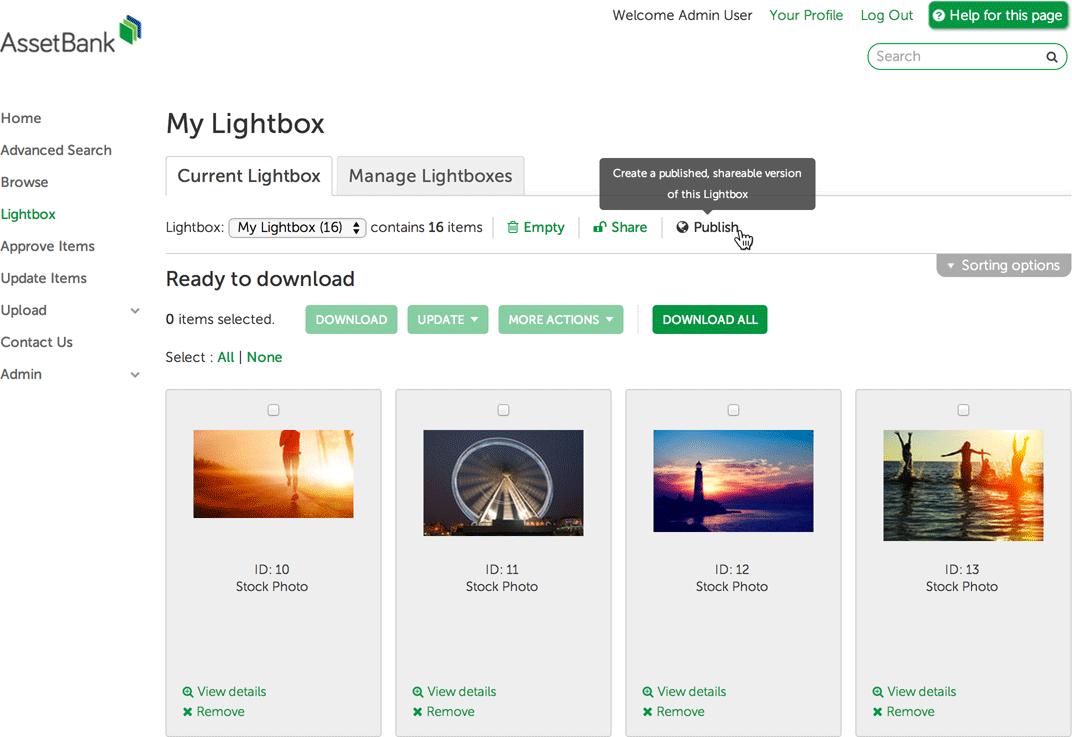Smaller companies tend to start off storing their assets on a shared network folder. This works for them as, due to their size, they tend not to have many assets to share. So looking through a few folders and finding what they need is not a time-consuming task.
As companies grow in size however, they start to amass much more digital content including:
- Various company and product logos
- Images they have purchased as part of a marketing campaign (e.g. elements used for a brochure or web banner)
- Product images
- Portraits of key staff
- PowerPoint presentations from Sales and Technical conferences
- Video and audio footage
- Key documentation
- Photos of company social events
At this stage things start to become less manageable. Specific assets become harder to find, version control becomes an issue, staff get fed up being caught in the middle (dealing with requests for logos and images), and the idea that they could be saving money through re-using things they already paid for becomes more apparent. This is when they tend to look into Digital Asset Management (DAM).
Benefits of DAM over a network storage solution
1/ Direct access for all relevant users (staff and partner organisations) Browser based DAM systems allow your users to log in from anywhere at any-time, to find the materials they need. A permissions based self-service model saves users time whilst saving you money.
2/ Find-ability (multiple search, browse and filter options) Unlike a network folder, a single asset can exist in multiple folder locations. Users can then browse to the resource they need in the way that is most natural to them. They can also browse by keyword or even apply a filter prior to browsing (e.g. reducing the browse folder structure to only show video files). In addition, searching across all the assets you have is suddenly viable and produces good results due to metadata being attached to each asset (e.g. title, description and keywords). Advanced searching allows users to search on specific attributes including date ranges, and search builder allows complex searches to be constructed.
3/ Approval workflows (for upload, edit or download) You can choose which assets are safe for everyone to download directly, without the need for additional human intervention. Other assets you can set to 'require approval' first (on a group by group basis), with the reason for use being passed to the relevant team for the OK before download. The same logic can be configured for uploads (trusted groups can upload directly, others need approval before the content goes live) and for editing existing assets.
4/ Ability to communicate with your user base As well as making it easy for people to find what they need, DAM systems also allow administrators to draw attention to new or featured content. Helping raise awareness of certain materials that will benefit the user base (e.g. elements of a campaign that can now be re-used by other marketing offices), and keeping users informed with any news or announcements.
5/ Image manipulation Users may want the assets they find to be converted to the right filetype and dimensions to suit their task. Good DAM systems have image and video manipulation software integrated within them, allowing users to convert the files at point of download, for example converting a print resolution CMYK gif image to a smaller web ready RGB jpg.
6/ Greater control As well as being the most efficient way to share, DAM systems also add extra levels of control and management over network storage including:
- Version control including version history
- Activation or expiry dates that will automatically reveal or hide assets
- Automatic emails sent to users who have downloaded assets that have since expired
- User management including temporary user accounts
- Full audit logging of user activity and asset usage
- Easy identification and removal of duplicate assets
- Comprehensive reporting
Summary
Small organisations tend to have less need for DAM systems. As they grow larger though, and as the number of assets they have and the number of people requiring access increases, Digital Asset Management becomes a logical next step. As well as being the best way to manage such materials, Digital Asset Management can also save money that would have been wasted through manual management of such assets, or through lack of awareness and re-use of materials that have already been paid for.
We hope this list has been useful. If you have any feedback or questions then please get in touch: feedback@bright-interactive.co.uk.
Thanks, Paul.



